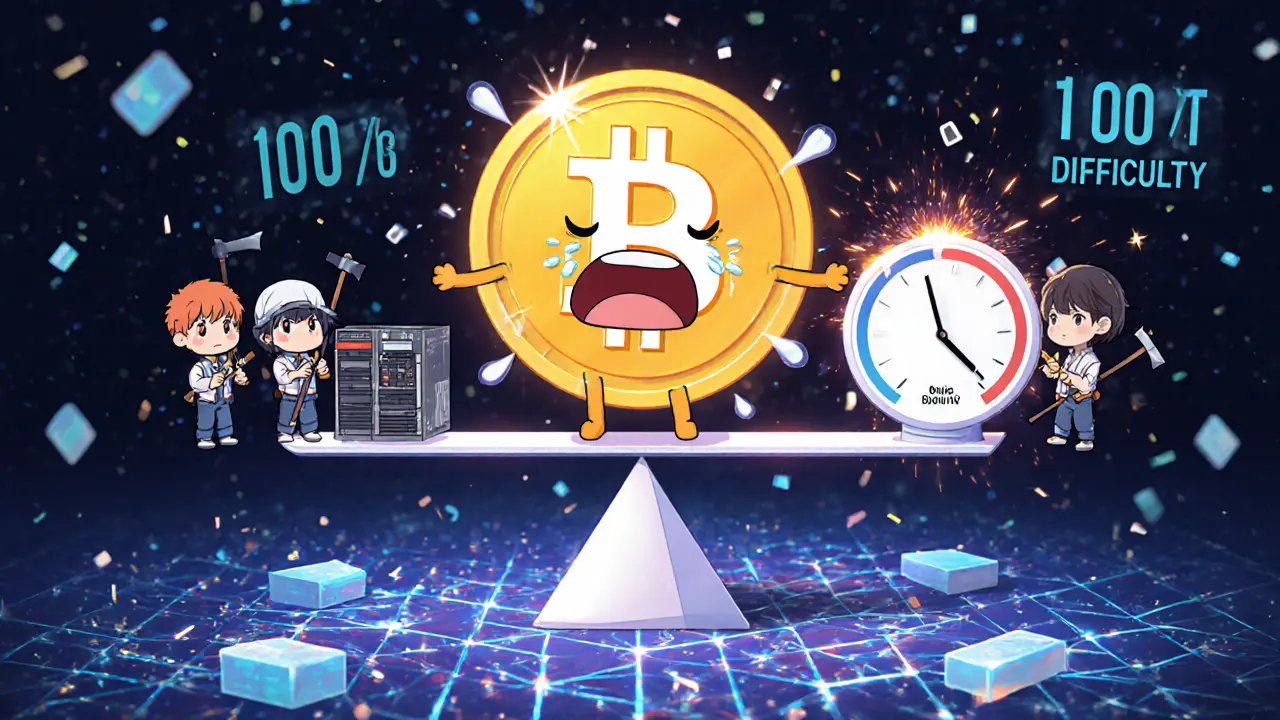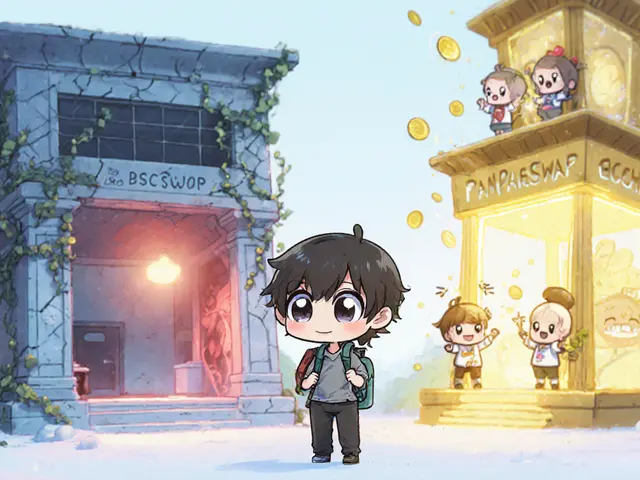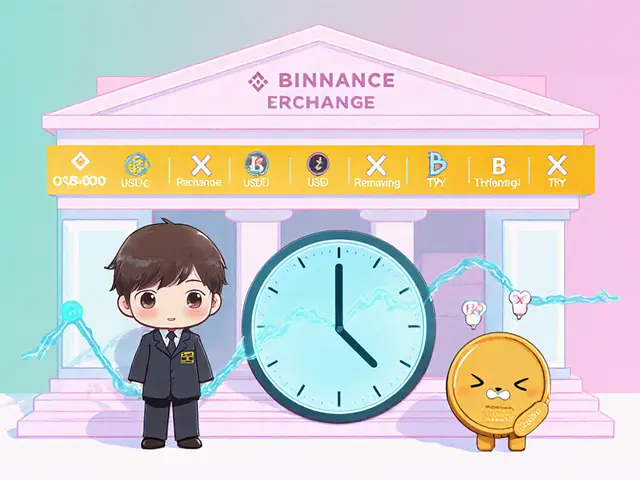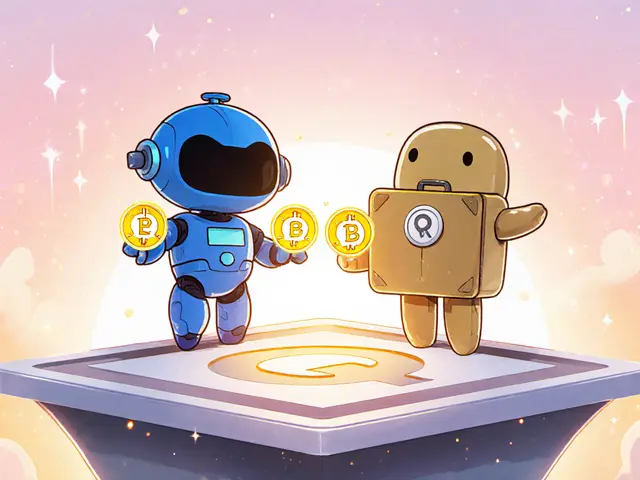Bitcoin Mining Profitability Calculator
Calculate Your Mining Profitability
Enter your mining parameters to estimate daily earnings based on current network conditions.
Estimated Results
Bitcoin doesn’t run on luck. It runs on math. And at the heart of that math is a simple but powerful relationship: hash rate and mining difficulty. One goes up, the other follows. One goes down, the other adjusts. It’s not magic. It’s not politics. It’s a self-correcting system built into Bitcoin’s code to keep everything running smoothly - no matter how many miners join or leave.
What Is Hash Rate?
Hash rate is the total computing power being used by the Bitcoin network to process transactions and secure the blockchain. Think of it like the number of people trying to solve a giant puzzle at the same time. Each attempt to solve that puzzle is called a “hash.” The more hashes per second the network can make, the higher the hash rate.It’s measured in hashes per second. Back in 2010, a single CPU could do a few million hashes per second - that’s megahashes (MH/s). Today, the entire Bitcoin network does over 800 exahashes per second (EH/s). That’s 800 quintillion guesses every second. To put that in perspective, if every person on Earth (8 billion people) had a supercomputer doing 100 trillion hashes per second, we’d still be far short of Bitcoin’s current hash rate.
What Is Mining Difficulty?
Mining difficulty is how hard it is to find a valid block. Bitcoin’s protocol doesn’t care how many miners are active. It only cares about one thing: blocks should come out roughly every 10 minutes. That’s the rule. No more, no less.Difficulty adjusts automatically to make sure that rule stays true. If miners are finding blocks too fast - say, every 5 minutes - the network makes the puzzle harder. If blocks are taking 15 minutes, it makes the puzzle easier. It’s like turning a dial: more miners = harder puzzle. Fewer miners = easier puzzle.
Difficulty is a number. Right now, it’s over 100 trillion. That means, on average, miners have to try 100 trillion different hash values before one of them hits the target. The higher the number, the more guesses it takes. And each guess costs electricity, time, and hardware.
The Inverse Relationship: When Hash Rate Goes Up, Difficulty Follows
Here’s the core idea: hash rate and mining difficulty are locked in a feedback loop.When more miners join the network - maybe because Bitcoin’s price jumped, or new ASIC chips became available - the total hash rate spikes. Suddenly, blocks are being found in 7 minutes instead of 10. That’s a problem. If blocks come too fast, the supply of new Bitcoin increases faster than planned. Transaction confirmations get messy. The blockchain’s predictability breaks.
So every 2,016 blocks - which usually takes about two weeks - Bitcoin checks: “How long did it take to mine the last 2,016 blocks?”
If it took less than 20,160 minutes (10 minutes × 2,016), the difficulty increases. If it took longer, difficulty drops.
For example, if the network mined 2,016 blocks in 18,000 minutes (instead of 20,160), that’s 11% faster. The difficulty will increase by about 11% to slow things back down. Simple. Precise. No human input needed.
Why This Matters for Miners
If you’re mining Bitcoin, you don’t just care about the price. You care about difficulty. Because difficulty directly affects your profits.Let’s say you have a miner that does 100 TH/s. At a difficulty of 50 trillion, you might earn $15 a day in Bitcoin. But then the network hash rate surges - maybe because a big mining farm in Texas just added 10,000 new machines. Two weeks later, difficulty jumps to 70 trillion. Suddenly, your 100 TH/s miner is only earning $10 a day. Why? Because the puzzle is harder. You’re competing against more power. Your share of the reward shrinks.
This is why large mining companies like Marathon Digital and CleanSpark don’t just buy miners. They buy future miners. They plan around difficulty cycles. They time their hardware upgrades to hit right after a difficulty drop. They lock in cheap power contracts because energy is 90% of their cost.
Small miners? They get squeezed. Many can’t afford the latest ASICs. They can’t compete with data centers running on hydroelectric power. So they join mining pools - groups of miners who combine their hash rate and split the reward. It’s less risky, but also less profitable per unit of hardware.
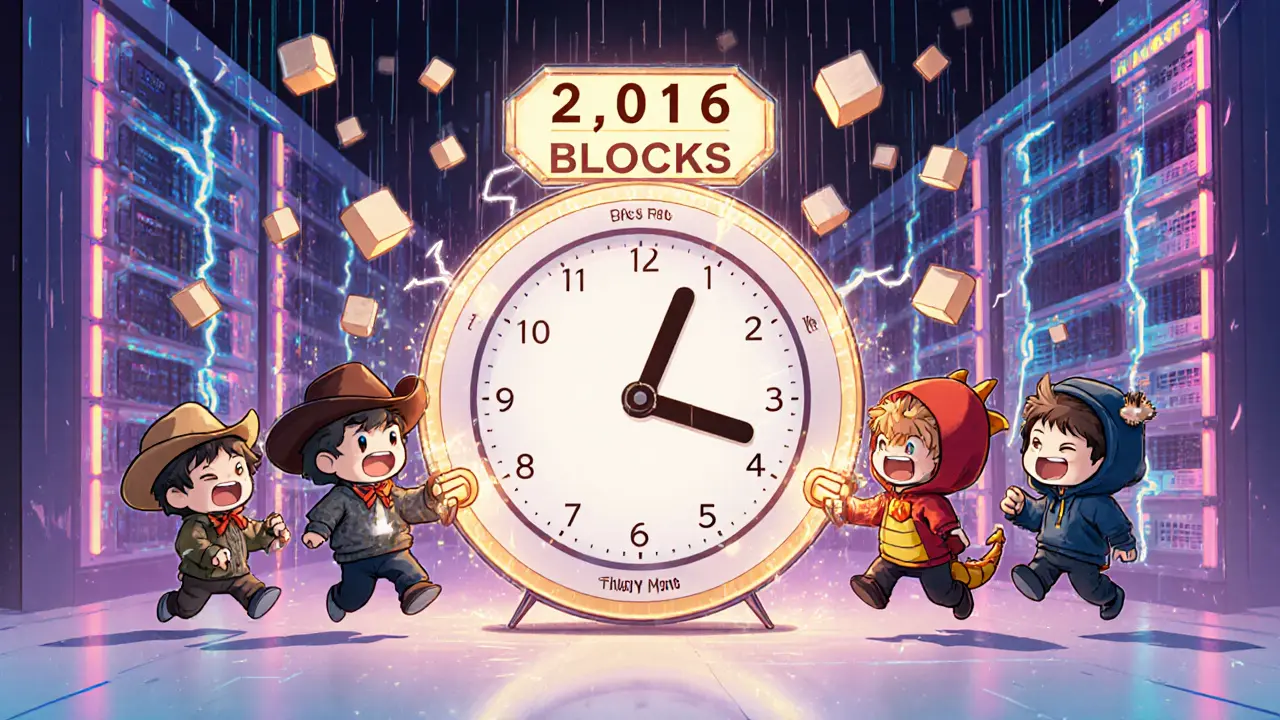
What Drives Hash Rate Changes?
Hash rate doesn’t move randomly. It reacts to real-world forces:- Bitcoin price: When BTC hits $70,000, more people want to mine. More miners = higher hash rate. When it drops to $30,000, some shut down. Hash rate falls.
- Hardware efficiency: New ASIC chips like the Bitmain S21 or MicroBT M60S are 30-50% more efficient than last year’s models. When these flood the market, hash rate spikes - even if price stays flat.
- Electricity costs: Miners in Iran, Kazakhstan, or Texas with cheap power have an edge. If energy prices rise in one region, miners pack up and move. Hash rate shifts geographically.
- Regulations: China banned mining in 2021. Hash rate dropped 50% overnight. Miners moved to the U.S., Canada, and Georgia. The network adjusted - and kept going.
These aren’t abstract trends. They’re daily decisions that ripple through the network. A single power plant going offline in Texas can cause a 1% hash rate dip. A new mining farm opening in Iceland can push it up 2%. Each change feeds into the next difficulty adjustment.
Security and Decentralization
Higher hash rate isn’t just about mining profits. It’s about security.The more computational power securing the network, the harder it is to attack. To double-spend Bitcoin, you’d need to control over 50% of the total hash rate. At today’s levels, that would cost billions of dollars in hardware and electricity - and likely trigger a network response before you even finished.
That’s why Bitcoin’s design is brilliant. It doesn’t trust people. It doesn’t rely on CEOs or governments. It trusts math. And the math says: more hash rate = more security. The difficulty adjustment ensures that security scales automatically with participation.
Even if a country tries to ban mining, the network adapts. Miners relocate. Hash rate recovers. Difficulty adjusts. The blockchain keeps running.
What Happens If Hash Rate Drops Suddenly?
Imagine a major mining region suffers a blackout. Or a new regulation shuts down 30% of global mining. Hash rate crashes.For the next two weeks, blocks take longer to mine. Maybe 15, 20, even 30 minutes between them. Transactions pile up. Fees rise. People get frustrated.
But then the difficulty adjustment hits. It drops. Suddenly, the same miners can find blocks again in 10 minutes. The network heals itself. No one had to vote. No one had to negotiate. The code did it.
This is why Bitcoin is so resilient. It doesn’t need a CEO. It doesn’t need a board. It just needs enough miners to keep the math working.

What Should New Miners Know?
If you’re thinking about starting mining today, here’s the truth:- Don’t buy a miner without checking the current difficulty and projected adjustment cycle. A miner that’s profitable now might be a paperweight in 30 days.
- Energy costs matter more than hash rate. A 100 TH/s miner using $0.12/kWh will lose money. The same miner on $0.03/kWh will profit.
- Join a pool if you’re not running 10+ machines. Solo mining is nearly impossible now.
- Track difficulty trends. Use mining calculators that factor in future adjustments, not just today’s numbers.
- Hardware depreciates fast. The ASIC you buy today might be obsolete in 12 months.
Bitcoin mining isn’t a get-rich-quick scheme. It’s a high-stakes industrial operation. And the rules are written in code - not in marketing brochures.
The Bigger Picture
Hash rate and difficulty aren’t just Bitcoin mechanics. They’re a model for decentralized systems everywhere. This is how you build trust without a central authority. You make the rules mathematically self-enforcing.As Bitcoin grows, so does its influence. More hash rate means more security. More security means more adoption. More adoption means more miners. More miners mean higher difficulty. And the cycle continues.
It’s not perfect. It’s not fast. But it’s reliable. And in a world full of broken systems, that’s rare.
How often does Bitcoin mining difficulty adjust?
Bitcoin mining difficulty adjusts every 2,016 blocks, which typically takes about two weeks. The network calculates the average time it took to mine those blocks and adjusts difficulty up or down to keep the 10-minute target. If blocks were found faster than expected, difficulty increases. If slower, it decreases.
Can hash rate go down?
Yes. When Bitcoin’s price falls, electricity costs rise, or miners shut down due to unprofitability, the total hash rate drops. This happened in 2022 after China’s mining ban and again in 2023 when energy prices spiked in Europe. The network responds by lowering difficulty to keep block times stable.
Does higher difficulty mean more secure Bitcoin?
Yes. Higher difficulty means more total hash rate, which means more computing power securing the network. To attack Bitcoin, you’d need to control over half of that power - which becomes exponentially more expensive as hash rate grows. Today’s network would cost billions to compromise.
Why do mining pools exist?
Mining pools let small miners combine their hash rate to increase their chances of finding a block. Since solo mining is nearly impossible at today’s difficulty levels, pools distribute rewards proportionally based on contributed power. This makes mining viable for individuals without massive hardware setups.
Do all cryptocurrencies use the same difficulty adjustment?
No. Bitcoin’s 2,016-block adjustment is unique. Other coins like Litecoin use different intervals (every 2,016 blocks, but faster block times). Some, like Ethereum, don’t use proof-of-work at all. Even among PoW coins, the formula, frequency, and target block time vary. Bitcoin’s system is the most tested and widely followed.
Can the difficulty adjustment be changed?
Technically, yes - but only through a network-wide consensus upgrade. Bitcoin’s protocol is designed to be resistant to change. Any modification to difficulty adjustment would require over 90% of miners and nodes to agree. There’s been no serious proposal to change it since 2016, because the current system works too well.
How do I track current hash rate and difficulty?
You can check real-time data on sites like Blockchain.com, BitInfoCharts, or 21.co. These platforms show current hash rate in EH/s, difficulty level, next adjustment date, and estimated time until the next change. Most mining calculators also pull this data automatically to estimate profitability.
What happens if no one mines Bitcoin?
If all miners stopped, the hash rate would drop to zero. Difficulty would eventually fall to 1 - the minimum level. But without miners, no new blocks would be confirmed. Transactions would stop. The network would freeze. Bitcoin’s security relies on continuous mining. No miners = no blockchain updates = no functional network.
Final Thoughts
Hash rate and mining difficulty aren’t just technical terms. They’re the heartbeat of Bitcoin. One measures the network’s power. The other controls its rhythm. Together, they ensure Bitcoin keeps ticking - even when the world around it changes.You don’t need to understand quantum physics to use Bitcoin. But if you want to mine it, you need to understand this relationship. Because in Bitcoin, the rules don’t bend. They adjust. And they always come back to the math.
